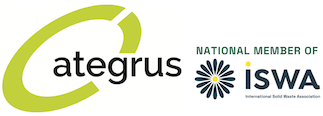Fuente: European Environment Agency (EEA), https://www.eea.europa.eu/
Publicado el 18/06/2024
New EEA monitoring tool reviews progress on plastics circularity in Europe
Plastics production and consumption patterns across Europe remain unsustainable and need to be made more circular to reduce waste, pollution, climate change and other negative impacts on the environment according to a European Environment Agency (EEA) briefing published today. The briefing also highlights the introduction of a new monitoring tool where people, policy makers and others can check progress on plastics circularity in Europe.
The monitoring tool, which is one of the thematic modules of the broader Circularity Metrics Lab, looks at progress made on the circularity of plastics across Europe. It provides detailed insights into the circularity of plastics, with technical information for policymakers, stakeholders and the public. The module will be updated annually with the latest data and new data streams as they emerge.
Together with the new monitoring tool, the new EEA briefing ‘The role of plastics in Europe’s circular economy’ indicates that the consumption of plastics is projected to rise both in Europe and globally.
The briefing compiles data from diverse sources to assess the current state of plastics production and consumption, and its environmental and climatic repercussions. It also explores strategies for transitioning Europe towards a circular economy for plastics.
(…)
El artículo completo se puede leer en el enlace: New EEA monitoring tool reviews progress on plastics circularity in Europe | European Environment Agency’s home page (europa.eu)
BRIEFING
The role of plastics in Europe’s circular economy
Plastics are essential in society. Yet value chains are unsustainable — generating emissions and increasing waste and pollution. Reducing such impacts demands moving towards a circular and sustainable plastics system. This briefing covers plastics production and consumption in Europe, the impacts on the environment and climate change, and how we can shift to a circular economy for plastics. Work from the Circularity Metrics Lab on plastics (EEA, 2024a) and a report on the Circularity Metrics Lab for Plastics from the European Topic Centre on Circular Economy and Resource Use inform this briefing.
Key messages
- Plastic consumption in Europe is high and expected to grow in line with projected increases in global plastics production.
- The consumption and production of plastics negatively affect the environment and spur climate change. More marine litter is washing up on Europe’s beaches, high levels of microplastics are entering the environment, and already high levels of greenhouse gas (GHG) emissions from the value chain are likely to increase as a result.
- The circularity of plastics material is increasing at a slow pace. Nevertheless, there are encouraging trends: mechanical recycling capacity is increasing, EU exports of plastics waste are decreasing, bioplastics production capacity is growing slowly, as is the use of recycled plastics.
(…)
El documento «»The role of plastics in Europe’s circular economy»» se puede consultar AQUÍ

